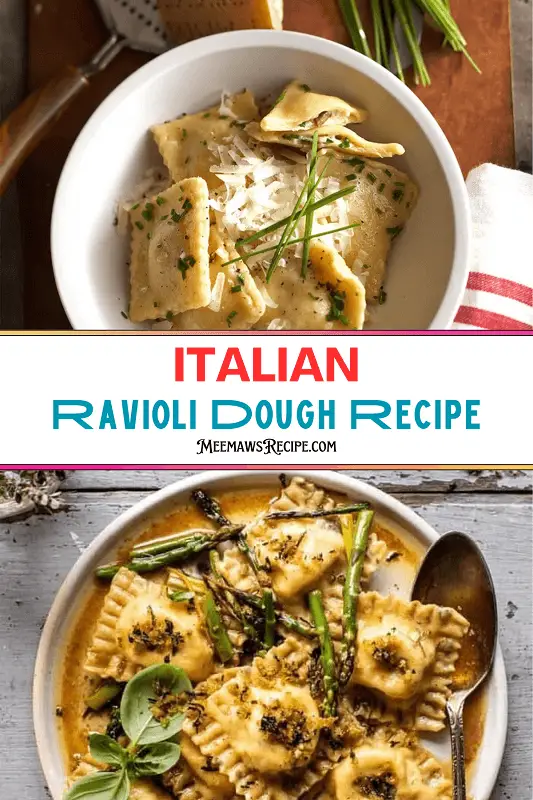In the heart of Italian kitchens, a humble mix of flour and eggs transforms into something extraordinary: the delicate dough for ravioli. It’s fascinating how this simple dough becomes the foundation of a cherished culinary tradition, woven into the tapestry of Italian culture with thread-like strands of history. Each time you blend these ingredients, you’re not just creating pasta—you’re reviving an art form passed down through generations.
A quintessential Italian ravioli dough is composed of 00 flour and fresh eggs, reflecting a tradition that dates back centuries. Adding a hint of olive oil can enhance the smoothness of the dough, offering a sumptuous texture that experts say is the secret to superior ravioli. Interestingly, about 50% of pasta dishes in Italy feature stuffed varieties, highlighting the integral role ravioli plays in Italian cuisine. Adjustments in thickness and versatility of fillings provide chefs a canvas for culinary creativity, keeping this classic recipe forever relevant.
Contents
Ingredients
To craft authentic Italian ravioli, you need a few simple ingredients. Each one plays a crucial role in creating the perfect dough that is both silky and firm. Here’s everything you need to begin your masterpiece:
- 2 cups of 00 Italian flour (finely milled for soft texture)
- 3 large fresh eggs
- 1 tablespoon of olive oil
- 1 teaspoon of fine sea salt
- Extra flour for dusting
The process of making Italian ravioli dough involves a balance of patience and precision. Understanding the details around preparation can make the task enjoyable rather than daunting. Here’s essential information to guide you through the process:
| Category | Details |
|---|---|
| Making Difficulty | Moderate |
| Preparation Time | 30 minutes |
| Cooking Time | 5 minutes |
| Serving Size | 4 to 6 servings |
| Cuisine | Italian |
Instructions
Making ravioli dough is a rewarding process that requires attention to detail. Below are the step-by-step instructions to ensure your dough is perfect for creating delicious ravioli. Follow these steps carefully to achieve the best results.

Photo Credit: anitalianinmykitchen
Mixing the Ingredients
Begin by placing your 00 flour on a clean surface, forming a well in the center. Crack the eggs into this well, adding a pinch of salt. Slowly mix the eggs with the flour, using a fork to incorporate them gently.
Once the flour and eggs have mixed well, add your tablespoon of olive oil. This helps make the dough pliable and gives it a rich flavor. Continue combining until the mixture becomes shaggy.
Kneading the Dough
With your hands, bring the dough together and start kneading it vigorously. Knead for about 10 minutes until the dough is smooth and elastic. If the dough sticks to your hands, sprinkle a little extra flour.
Ensure you apply steady pressure as you knead. This process helps develop the gluten, giving your dough flexibility. Once finished, the dough should feel slightly sticky but not wet.
Resting the Dough
Wrap the kneaded dough in plastic wrap and let it rest. Allow it to rest for at least 30 minutes. This step is crucial in letting the gluten relax, making it easier to roll out.
Resting the dough also enhances its texture. It allows the ingredients to merge, resulting in a smoother finish. Make sure to keep it in a cool spot while it rests.
Rolling Out the Dough
After resting, unwrap the dough and cut it into quarters. Keep the pieces you aren’t working on covered. Use a rolling pin or pasta machine to roll the dough out thinly.
The dough should be almost transparent when rolled out, about 1-2mm thick. This is important for creating tender ravioli. Dust with flour as needed to prevent sticking.
Important Things to Keep in Mind
When crafting your ravioli dough, **consistency** is key. Ensure your dough isn’t too wet or too dry; it should be smooth yet firm. A smooth texture helps in rolling out the dough without tearing.
It’s crucial to use good-quality ingredients, especially fresh eggs and 00 flour. The freshness of these ingredients impacts the dough’s taste and texture. **Always check the quality** before starting.
Keep the workspace clean and organized for efficiency. Having all your tools and ingredients within reach saves time and reduces stress. This is a core habit of successful chefs.
Pay attention to the thickness of your rolled-out dough. A thickness of 1-2mm ensures the ravioli cooks evenly. **Too thick** and it will be chewy; **too thin**, and it may break.
Lastly, be mindful of the filling-to-pasta ratio. Too much filling can cause the ravioli to burst during cooking. **Maintain a balanced ratio** for perfect ravioli.
Troubleshooting Common Issues
Dealing with Sticky Dough
If your ravioli dough feels sticky, it can be challenging to handle. This often happens if there is too much moisture in the dough. To fix this, sprinkle flour onto the dough and knead it until the texture improves.
Remember, it’s easy to add more flour but difficult to remove excess. So, add flour gradually and check the dough’s consistency. **Over-flouring** can make the dough dry and tough.
If the dough remains sticky despite adding flour, consider letting it rest longer. Resting allows the flour to absorb the moisture better. This simple trick can often solve the problem.
Preventing Dough from Tearing
Tearing can occur if the dough is rolled too thin. Ensure the dough maintains a uniform thickness while rolling it out. If it tears, patch it with a small piece of dough and roll over it gently.
Another reason for tearing could be insufficient kneading. Kneading develops gluten, which gives the dough strength. **Proper kneading** can prevent tears and improve texture.
Lastly, keep the dough covered when not in use. Exposure to air can dry it out, making it more prone to tearing. Using a damp cloth can help retain moisture.
Ensuring Even Cooking
Uneven cooking can result from varied thicknesses in the dough. Use a pasta machine for consistent results. This tool helps achieve the right thickness without much effort.
Another factor could be the filling distribution. **Ensure even spacing** of the filling to promote uniform cooking. Uneven filling can cause some parts to cook faster than others.
Lastly, boil the ravioli in a large pot with plenty of water. Crowding them can make even cooking difficult. Stir gently to prevent sticking and ensure they cook evenly.
Frequently Asked Questions
Creating the perfect ravioli dough can be an art and a science. This section has compiled common questions experts often ask when mastering this culinary skill. Discover insights and tips to elevate your ravioli-making experience.
What type of flour works best for ravioli dough?
For authentic Italian ravioli, the choice of flour is crucial. It’s widely recommended to use 00 flour, known for its fine texture and low gluten content, which gives the dough a silky smoothness essential for pasta. This type of flour allows the dough to stretch thinly without breaking, providing the tender texture ravioli is famous for.
If 00 flour is unavailable, all-purpose flour can be a suitable substitute. However, it’s important to adjust the kneading time to achieve the desired elasticity. Experimenting with different flour combinations may help tailor the dough to your preference, though actual results will vary based on environmental factors and specific brands.
How can you prevent ravioli from sticking together?
To prevent ravioli from sticking, proper flouring during preparation is vital. Dust the dough lightly with semolina or all-purpose flour as you roll and shape the ravioli. This creates a barrier between each piece and helps absorb any moisture that may cause sticking.
Once formed, arrange the ravioli in a single layer on a floured or parchment-lined tray. You can also consider briefly chilling them in the refrigerator before cooking, which firms up the dough. These techniques ensure the ravioli maintain their shape and don’t merge into one big pasta mess.
What is the best way to ensure each ravioli is evenly filled?
Precision in filling is key to perfect ravioli. Use a piping bag or small spoon to place equal amounts of filling on the dough sheet. Spacing them uniformly ensures even cooking and prevents bursting during boiling.
After placing the filling, press down gently around each mound to seal and eliminate air pockets. Air trapped within ravioli can expand when cooked, leading to ruptures. Sealing with a little water or a beaten egg also guarantees a secure bond.
Is there a way to store ravioli if not cooking immediately?
Ravioli can be preserved effectively if you aren’t planning to cook them right away. Arrange them in a single layer on a tray and freeze until solid. Once hardened, transfer them into airtight containers or freezer bags for long-term storage.
This method keeps the ravioli from sticking together and maintains their shape. When ready to cook, add the frozen ravioli directly to boiling water without thawing to preserve their texture and flavor.
What’s the most common mistake when making ravioli dough?
A frequent mistake in ravioli making is overworking the dough, leading to a tougher texture. Striking the right balance in kneading is crucial; it should be smooth and elastic without becoming dense. Over-kneading develops too much gluten, which results in chewy pasta.
Another error is not allowing the dough to rest sufficiently. Resting is crucial for the hydration of the flour and relaxation of gluten strands, so the dough rolls easier and cooks with a tender bite. Patience during this phase is often rewarded with superior-quality ravioli.

